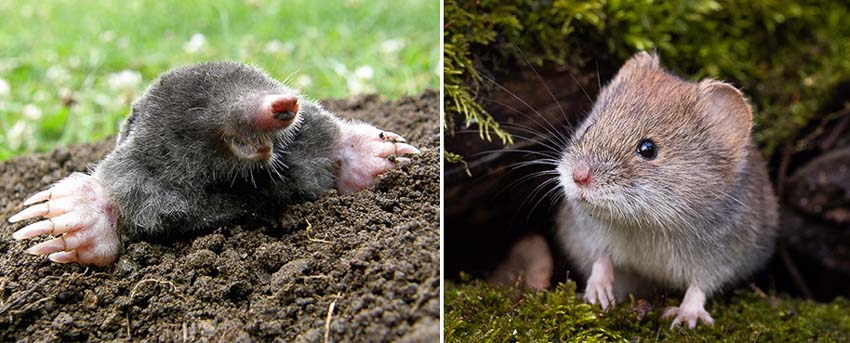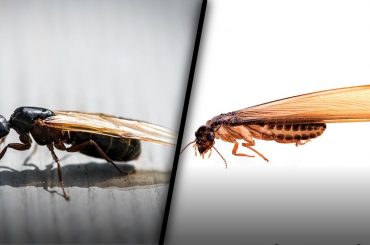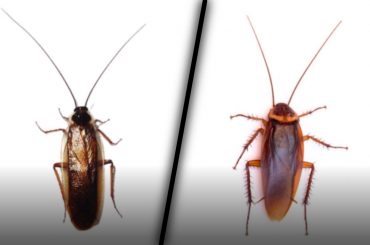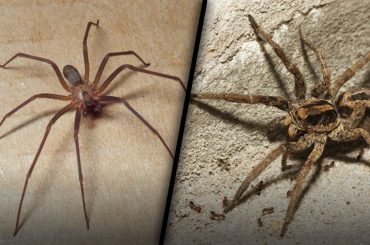Is there a good way to tell a mole from a vole? Insects, grubs, and earthworms are the major sources of food for moles. The vole is a vegetarian. A rodent isn’t one of them!
It can be a real nuisance to deal with moles and voles. My garden was ravaged by moles one year. What made me know that? In that bed, all the plants fell into mole tunnels after a heavy spring rain. Down there, there was a mole condominium. The soil had to be hauled in and all the plants had to be replanted.
In this article, we’ll compare moles to voles and discover their differences.
Read More Crawfish vs Crayfish
What Is a Vole?
The vole, also known as the meadow mouse, is a nocturnal mammal that mostly lives above ground. Unlike mice, these rodents have chunkier bodies, dark-brown to black fur, and short, fur-covered tails. Gray is the color of young voles.
In the United States, there are 23 species of voles, and seven of them can cause significant damage, according to Meg Pearson, technical training manager at Critter Control. Washington State estimates that voles reduced apple orchard production by 35 percent due to a population of 1,700 per acre.
Pearson explains that voles breed throughout the year, and their gestation period is only 21 days. There are different species of voles in different parts of the world, so the one that causes you the most trouble depends on where you live.
The four most common vole species are:
-
Prairie voles: Found in drier areas from Mexico to Ohio in the central U.S.
-
Meadow voles: These species are most abundant in the eastern half of the country.
-
Woodland voles: They live in wooded areas in Eastern U.S.
-
Water voles: These mammals live near water bodies and are protected by law.
For eating vegetation, voles have large teeth at the front of their mouths. Grass, seeds, and roots are the most common food sources for voles.
Read More Basset Hound vs Bloodhound
Because voles don’t push up the soil into mounds like moles, you won’t notice their shallow, narrow runways at ground level. There is a tendency to mistake moles for voles when it comes to damage caused by them.
Ornamental plants, gardens, and grass are more likely to be damaged by voles. To hide their homes from predators, voles prefer areas with heavy ground cover. Vegetation roots are rarely eaten by them by tunneling underground.
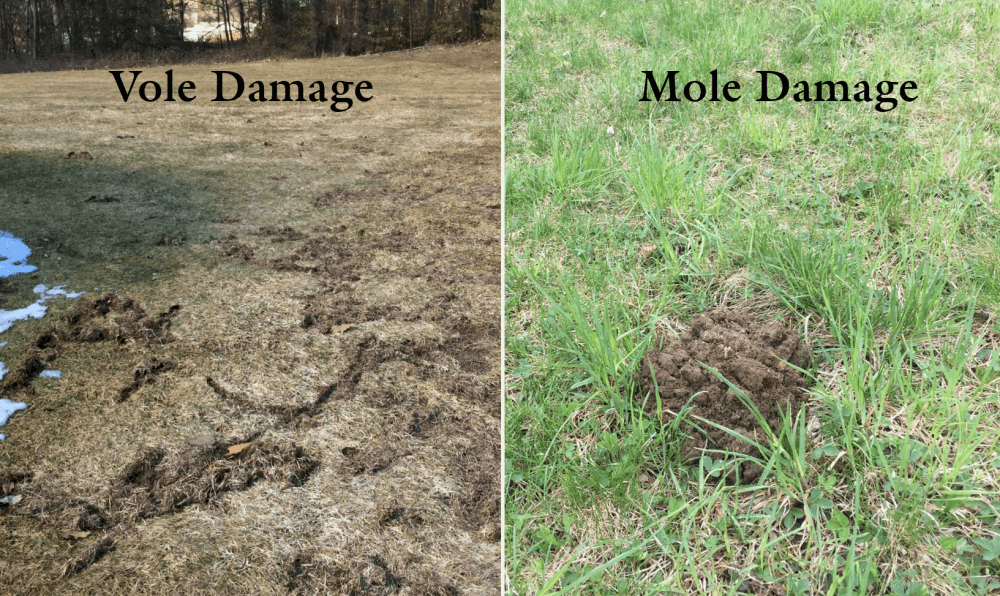
What Is a Mole?
Moles are related to hedgehogs and shrews, but look like rodents.
When moles search for food, they dig underground tunnels. The fur on their backs does not lie flat. Dirt cannot get trapped inside because it sticks up.
Most species live along rivers, streams, lakes, or other bodies of water in meadow, grassland, woodland, riparian, or wetland habitats, according to the National Wildlife Federation.
According to Pearson, moles spend most of their lives underground and feed on insects and earthworms. Tunneling by mice causes damage.”
Read More Flying Ants vs Termites
Moles eat insects, including harmful ones like grubs, despite being irritating.
Vole Versus Mole: Holes and Tunnels
If you see dirt tunnels running across your yard with piles at either end, you probably have moles. A mole creates shallow tunnels on the surface and mounds of soil from deeper tunnels. You will feel squishy when walking in your yard.
A vole digs an entrance to its burrow by digging a dime-sized hole around the root of a plant, according to Pearson. Vole holes often appear after following surface runways.
“Voles can eat away the roots and chew all over the bark of ornamentals and trees, causing visible damage. In this way, the circulation of the plant is cut off, and the plant dies. In general, the gnaw marks are irregularly shaped and at different angles.
Mole Versus Vole Control
Getting rid of moles can be a challenging task, so you may need a professional’s help. If there aren’t too many voles, you can trap them.
DIY vole removal
Her lawn has been free of voles since Susan Kozaliek eradicated them in Oklahoma. Play sand was poured into the voles’ exit holes to discover which runs were active after she discovered dying plants with visible roots damage.
In active runs, the voles would kick out sand, so it was very easy to pack down and identify the sand.” Kozaliek explained.
She bought inexpensive mousetraps instead of poison because she didn’t want to use poison. Several traps were placed near the voles’ exit holes outside active runs, baited with rolled oats and peanut butter. In order to keep birds out and keep the buckets and trash cans from blowing over, she covered them with bricks topped with small buckets and trash cans. Mornings began to be filled with vole catches.
Read More Rats vs Mice
In spite of the time it took, Kozaliek said he knew he needed to get a handle on it after all the money he had spent on plants and the money he had planned on spending on future plants. During the past couple of months, she has caught 45 voles!
Mole removal
The process of trapping moles requires patience and effort.
Because poisoning is easier, many people use it. In addition to poisoning moles, poisoning hawks, owls, and coyotes, who eat moles, is considered inhumane. Because the poison is usually meat-based, your dog may be attracted to it as well.
Despite their effectiveness, kill traps are considered inhumane. The mole must also be dealt with afterward.
Live traps should be placed in the main tunnels of active moles for best results. With a stick or a post hole digger, dig into the soil near a hole to uncover the tunnels. In a day or so, you’ll notice the hole has been repaired.
Ensure that the hole you dig is big enough to accommodate the trap. Using a weighted can or bucket, cover the hole with soil and place the baited trap inside. It helps you find the trap later and prevents you from catching unintended animals, such as birds. The moles must be relocated after they are caught.
Getting rid of grubs and worms is the most effective way to get rid of moles. If you want to kill grubs, try milky spore powder. It is also important to water less often; dry soil is not conducive to grubs and earthworms.
If your mole or vole problem becomes out of control, contact a professional. Trapping and other control methods differ depending on the situation, so check your local laws.
Read More Water Dogs VS Axolotls VS Water Puppies

